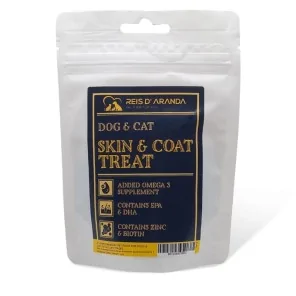The Tornjak originated from genetically homogeneous, almost extinct, indigenous shepherd dogs. These dogs have...
THE BURMILLA CAT
INTRODUCTION
The term Burmilla, as can be deduced, comes from the linguistic combination of Burmese and Persian Chinchilla, the breeds from which it originates. The silver cat, as it is often called, enjoys great popularity, although the breed, in its early days, was severely hampered by genetic reasons.
THE ORIGIN OF THE BURMILLA CAT
The Burmilla cat is a relatively young breed with its roots in the United Kingdom. Its origin can be traced back to an unexpected event in the 1980's when a Burmese cat and a Chinchilla cat accidentally interbred.
The cross between a Burmese cat, named Bambino Lilac Fabergé, and a long-haired Chinchilla cat, named Sanquist Silver Chinchilla, resulted in a litter of kittens with an exquisite coat and a charming personality. These kittens captured the attention of the breeders and they realised that they had discovered a beautiful new breed.
The Burmilla was officially recognised by several international cat associations, confirming its status as a recognised and accepted breed in the world of cat breeding and showing. In fact, The International Cat Association (TICA) has officially recognised the Burmilla as a breed since the 1990s.
Also, in that same year, the Fédération Internationale Féline (FIFe) recognised the Burmilla as a perfect breed to compete in FIFe shows, where they are judged according to breed standards for awards and titles.
Furthermore, the Cat Fanciers' Association (CFA) also recognises the Burmilla as a breed. Although the breed is not yet eligible for full championship status in the CFA, Burmilla cats can participate in competitions and receive titles in the provisional breed category.
WHAT DOES THE BURMILLA CAT LOOK LIKE?
Burmillas are of medium size with moderate bone structure. Their body is compact and well proportioned. They have elegant musculature which contributes to their agile and balanced appearance. The head is round and has a gently sloping profile towards the nose.
As for the eyes, they are large and expressive, and can be green or yellow. This feature adds a touch of intensity to his facial expression. The ears are of medium size and have rounded tips. They are well spaced on the head.
The most distinctive feature is its shiny silver coat. This coat is achieved by a combination of chinchilla and Persian genes, creating the effect of tipping at the tips of the hairs. It is soft and silky to the touch. Although silver is the most common characteristic, Burmillas may also have other colours such as chocolate, lilac and blue.
The tail is of moderate length and proportionate to the body. It may have a soft, silky texture similar to the coat, while the legs are medium in length and proportionate to the body. The feet are round and compact.
The tipping pattern is one of the most noticeable features in the Burmilla's coat. This pattern creates the distinctive silvery appearance at the tips of the hairs.
THE HEALTH OF THE BURMILLA CAT
As a recent breed, no hereditary diseases to which these cats are prone have yet been reported. Therefore, so far, it is considered to be a healthy breed. However, without sufficient exercise or if the food provided is inadequate or excessive, there is a tendency to suffer from overweight and obesity problems.
THE PERSONALITY OF THE BURMILLA CAT
The Burmilla cat is noted for its extroverted character. It is extraordinarily sociable, so it easily makes new friends, including children and dogs. It is very playful and retains the typical character of a kitten during its adult stage. Therefore, he can be quite demanding and, of course, mischievous.
CONCLUSION
In spite of his mischievousness, he also has moments of tranquillity. This cat breed is very affectionate and loves his family. He chases us around the house, looking at us inquisitively. He is also very intelligent and knows how to explain to us what he wants.
Leave a comment
Log in to post comments
















